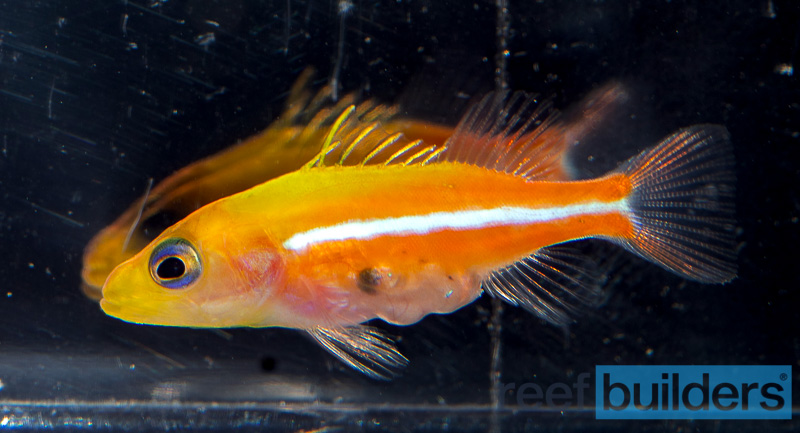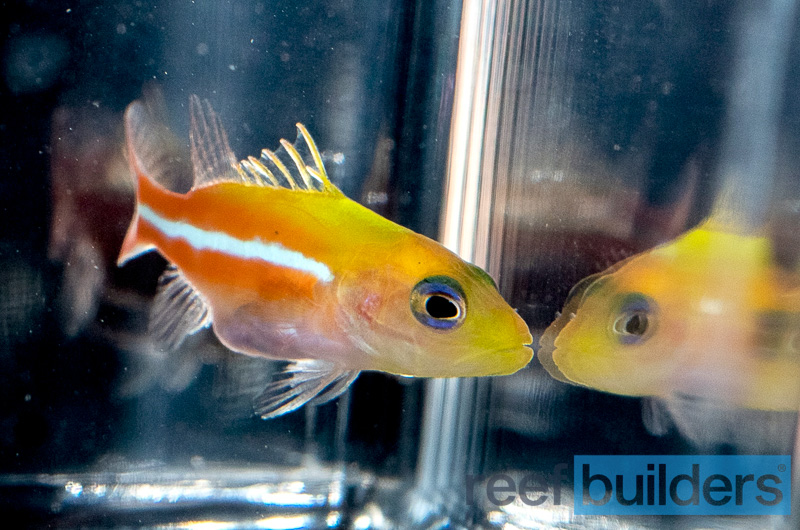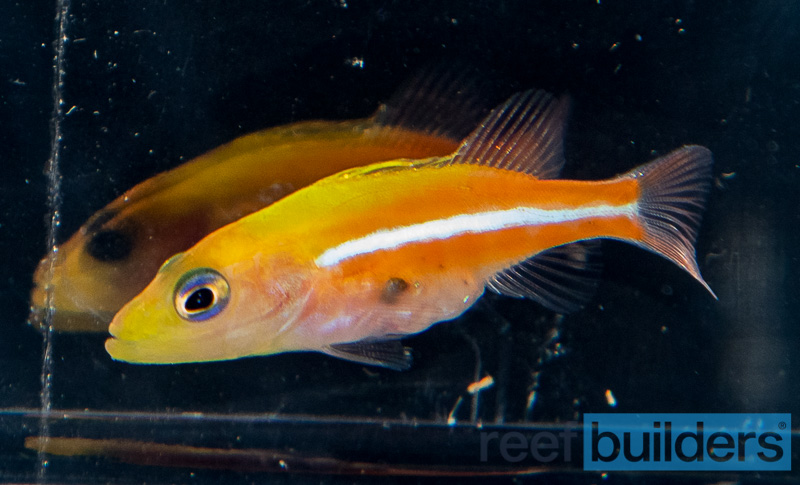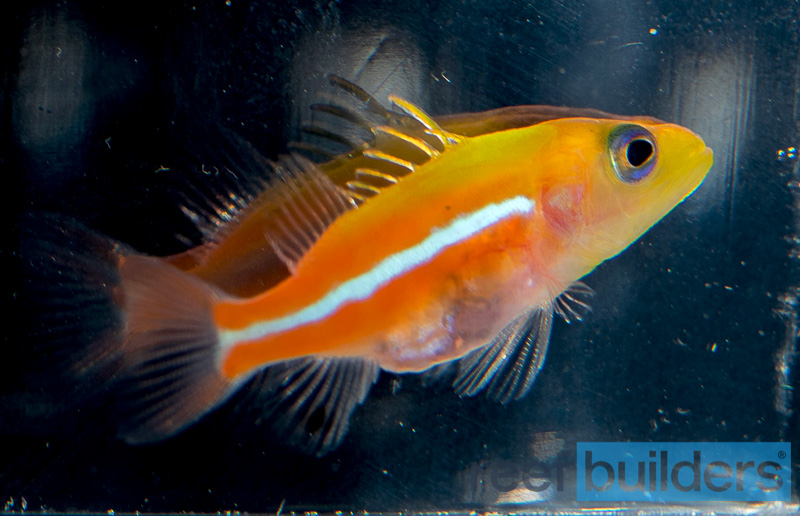The Dr. Seuss soapfish, Belonoperca pylei, is one of the most mysterious rare reef fish in the saltwater aquarium hobby and it has one of the coolest names to boot. We’ve shared many stories of this fascinating denizen of the twilight zone of the ocean over the years but today we have the sincere pleasure of sharing with you the smallest specimen ever documented courtesy of Marine Collectors. The tiny soapfish came from Sea Dwelling Creatures which has been getting their hands on a lot of great fish from the Central Pacific ocean lately, including many angelfish, basslets, wrasses and butterflyfish with more than a few Dr. Seusses to go around but only one teeny-tiny.
At first glance the gorgeous little oddity looks like the spitting image of the distantly related Liopropoma tonstrinum with a nearly identical juvenile color pattern that eventually breaks up into the spotted gem that we are more familiar with. At just an inch and half long this bébé Dr. Seuss is the spitting image of its cousin with a mostly red body, yellow anterior region and a bold blueish white stripe running down the flanks.
Since this juvenile B. pylei has basically the same behavior as the L. tonstrinum basslet we can’t imagine why this small predatory fish would mimic another predatory fish but at least it’s fun to think about. If you’re wondering why the ventral area of Marine Collectors’ tiny soapfish looks like that it’s because it had recently eaten a single large Mysis shrimp and it coiled and folded up into the stomach so it’s deforming the belly where the skin is very thin.
Dr. Seuss fish are some of the most fabled of rare and deepwater fish but they are notorious for developing symptoms of decompression sickness where adults typically will end up with positive buoyancy issues, developing a floating condition that eventually saps the energy of the fish trying to swim down. Like every kind of aquarium fish it’s always best to obtain or start with the smallest specimens possible so the odds are incredibly good that this tiny Dr. Seuss fish will not develop decompression issues and live a long fulfilled life in its future home.






